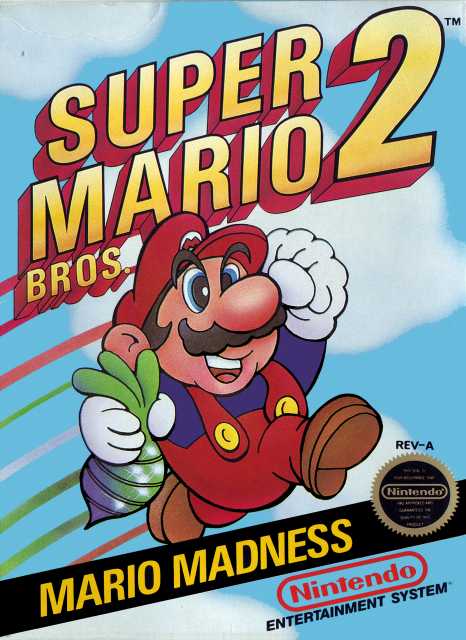Not the other way around.
:::::: http://arstechnica.com/gaming/news/2011/04/the-secret-history-of-super-mario-bros-2.ars :::::::
"The prototype, worked up by SRD, a company that programmed many of Nintendo’s early games, was intended to show how a Mario-style game might work if the players climbed up platforms vertically instead of walking horizontally, said Tanabe.
The idea was that you would have people vertically ascending, and you would have items and blocks that you could pile up to go higher, or you could grab your friend that you were playing with and throw them to try and continue to ascend,” Tanabe said. Unfortunately, “the vertical-scrolling gimmick wasn’t enough to get us interesting gameplay.”
The rapid-prototype development process on display here informs Nintendo’s design philosophy to this day. The company doesn’t begin development with characters and worlds: It starts by making sure that game boasts a fun and compelling game mechanic. If it’s not perfect, Nintendo has no qualms about throwing it out.
Soon after he was hired by Nintendo in the mid-’80s, Tanabe sat down with his boss, Mario creator Shigeru Miyamoto, to look at this prototype together.
“The game was mocked up (so that) when the player climbed about two-thirds of the way up the screen, it would scroll so that the player was pushed further down,” Tanabe said.
The game-design team led by Miyamoto was tasked with coming up with a game that used this trick of programming. But Tanabe and Miyamoto weren’t too hot on the concept.
While the prototype featured two players jumping, stacking up blocks to climb higher, and throwing each other around, the technical limitations of the primitive NES made it difficult to build a polished game out of this complex action. And playing it with just one person wasn’t very fun.
“Miyamoto looked at it and said, ‘Maybe we need to change this up,’” Tanabe recalled. He suggested that Tanabe add in traditional side-scrolling gameplay and “make something a little bit more Mario-like.”
“As long as it’s fun, anything goes,” Tanabe remembers Miyamoto saying.
|

Log in to comment